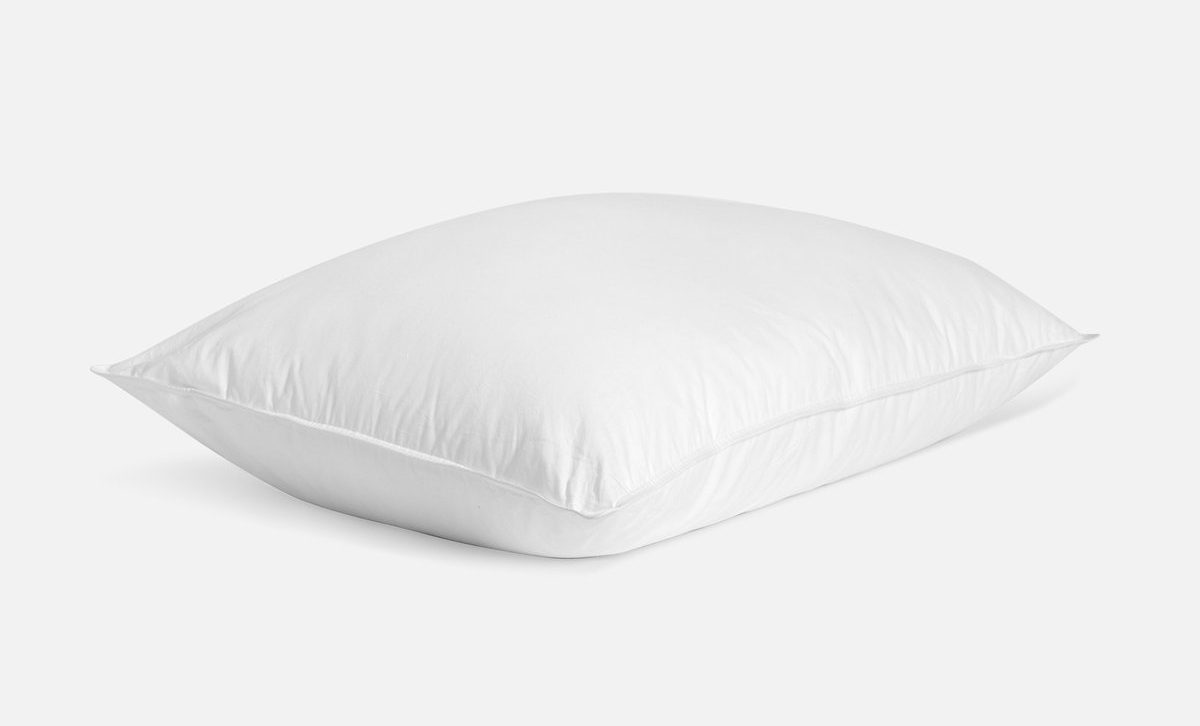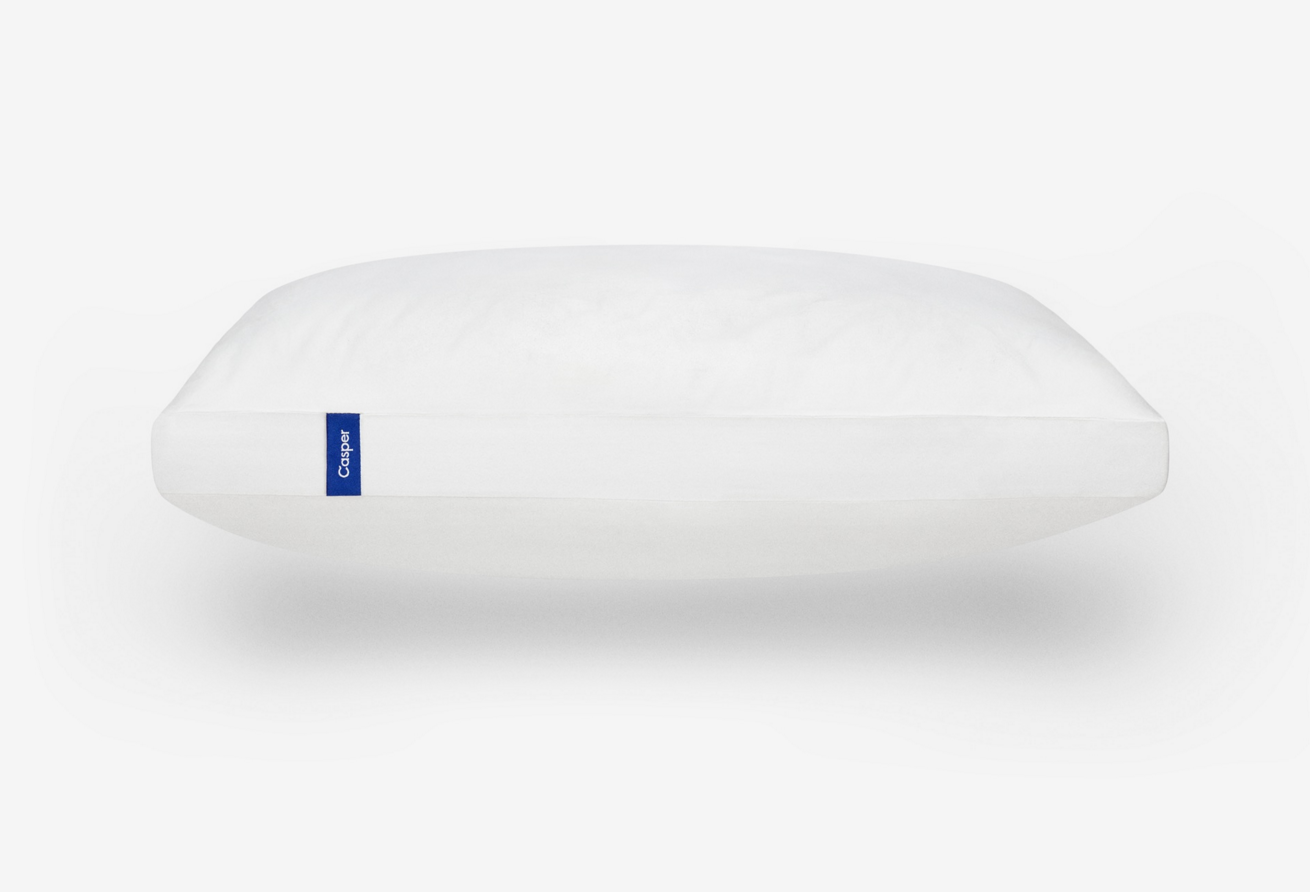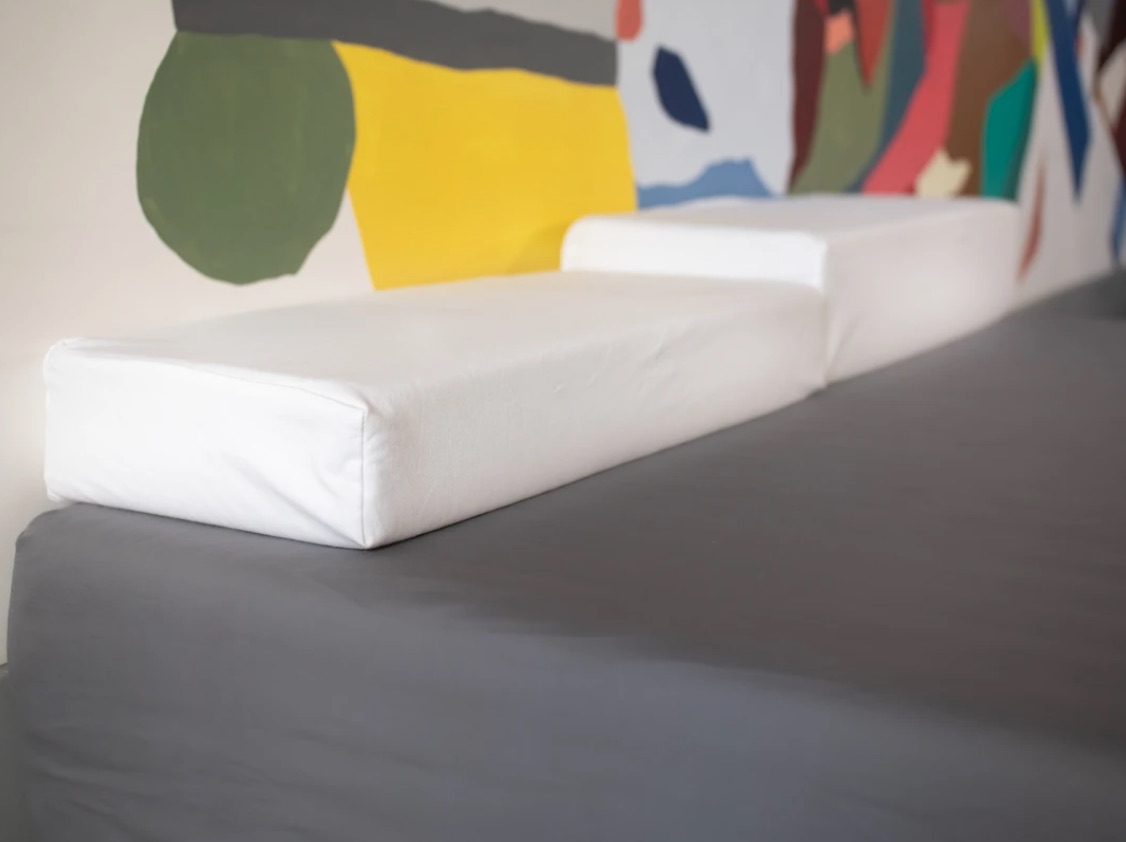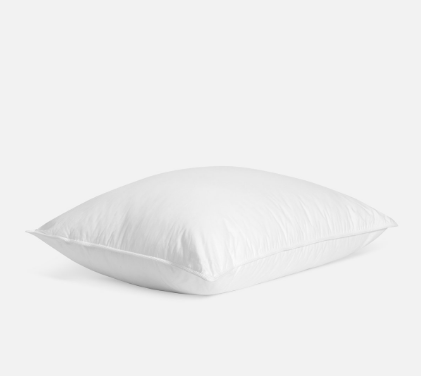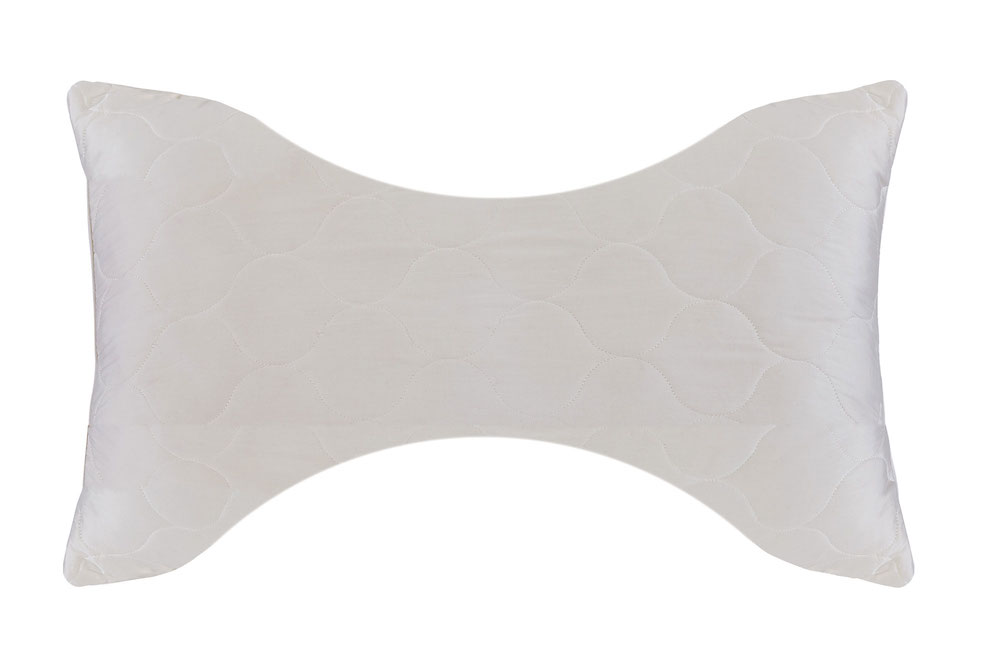Buying Guide – How to Shop for a Pillow as a Side Sleeper
Side sleeping is considered the healthiest sleep position because it opens up the airways to improve circulation. This position can also benefit sleepers with certain medical conditions, such as acid reflux and sleep apnea, and it also provides more comfort for pregnant women.
However, using the right pillow can be a deciding factor between comfort and discomfort for side sleepers. Certain pillow sizes and materials are conducive to side sleeping, while others can cause pain and pressure points to develop.
This guide will look at the mechanics of side sleeping, explore the different pillow types, and list the top-rated pillows for side sleepers according to the people who use them every night.
What You Need to Know About Side Sleeping
Generally speaking, there are three specific side sleeping positions (as illustrated below).

More than 40% of side sleepers utilize the fetal position, with their knees tucked in and their elbows bent. Other positions include the log, which involves straightening out the legs and arms, and the yearner, where the sleeper straightens out their legs and stretches out their arms.
Advantages of Side Sleeping
Side-sleeping is very common, and there are some great advantages to sleeping in this position. It’s easier on the neck and back than some other sleep positions, and very comfortable. Some of the best benefits of being a side-sleeper include:
- Improved spinal alignment: Sleeping on one’s side aligns the spine with the pelvis, which can decrease pain and alleviate pressure points. However, mattress and pillow choice are crucial. Supportive mattresses and pillows can improve spinal alignment, while others with less support can worsen pain and pressure symptoms.
- Reduces acid reflux: People with acid reflux experience chronic heartburn because stomach acid moves up the esophagus. Sleeping on one’s back or stomach can worsen heartburn symptoms, but sleeping on one’s left side improves circulation through the airways and helps alleviate heartburn. Sleeping on the right side, however, may exacerbate heartburn (since it puts pressure on the heart).
- Reduces snoring: People with obstructive sleep apnea often snore the most when lying on their backs. Side sleeping, on the other hand, can reduce snoring for apnea patients, as well as people who snore for other reasons (such as obesity).
- More comfortable for pregnant women: Pregnant women may experience discomfort when sleeping on their back because of the weight concentrated in their stomachs. Sleeping on one’s side transfers the weight away from the body. The side sleeping position is also safe for fetal health.
Disadvantages of Side Sleeping
One of the reasons it’s so instinctive to sleep on your side is because of how comfortable it is, especially if you happen to have back issues or find yourself snoring. However, there are a few drawbacks to constantly sleeping on your side. Some common disadvantages that arise due to sleeping on your side are:
- Added pressure on organs: As discussed above, sleeping on the right side can increase the discomfort of heartburn. Sleeping on the left side can also cause discomfort by putting pressure on vital organs like the liver, stomach, and lungs. Sleepers can mitigate this problem to some extent by sleeping with a pillow beneath their neck, as well as pillows under their waist and between their knees.
- Fetal position issues: Those who sleep in the fetal side position are susceptible to unique problems. These include increased symptoms of arthritis, as well as diaphragm restriction that may lead to problems with deep breathing. People with arthritis or circulatory issues may be more comfortable sleeping in the log or yearner side positions.
- Wrinkles: Unfortunately, this position forces sleepers to lie with one side of their face on the pillow. This can cause wrinkles to form over time — and those who strictly sleep on one side may notice more wrinkles on one side than the other.
Choosing the Right Pillow for Side Sleepers
If your best sleep position is on your side, then you want to make sure you choose a pillow that lets you rest comfortably through the night. Additionally, you’ll want to make sure the pillow properly cradles your head and neck and offers good back support.
There are various considerations to take into account when selecting the right pillow. Read on to learn about these important factors so that you’ll be better prepared to buy a pillow that suits your sleep needs.
Size
Size is a very important aspect when choosing your pillow. In addition to choosing a good size for sleeping on your side, you’ll want to make sure it offers a practical amount of support based on your height, bed size, etc. Below are standard pillow sizes and the related advantages of each size.
- Small (20W” x 12L”): This size is usually found with specialty pillows, such as cervical memory foam and buckwheat models. They are elevated around the neck and dip down beneath the head in order to provide targeted support.
- Standard (20W” x 26L”): This is the most common standard pillow size, as well as the most compact. It may not be ideal for people who tend to toss and turn, but Standard-size pillows are usually the cheapest option.
- Super Standard (20W” x 28L”):This is a good alternative for people who find the Standard-size too compact, including those who toss and turn.
- Queen (20W” x 30L”): The Queen is the second most popular size after the Standard. It will accommodate most sleepers who toss and turn.
- King (20W” x 36L”): In addition to being a good option for people who toss and turn, the King-size is usually long enough to provide a comfortable backrest or headrest for reading or watching TV in bed.
- Euro (dimensions vary): Euro-size pillows are unique, in that they are always square. They come in a wide range of dimensions; common examples include 26W” x 26L” and 20W” x 20L”. Many people find they are not comfortable for sleeping, but they make good head and backrests.
- Body (48-54W” x 20L”): Body pillows are exceptionally long, making them suitable for side sleepers who prefer to snuggle with a pillow while they sleep, as well as pregnant women.
Shape
Generally speaking, pillows come in even or curved surfaces. Even-surface pillows are far more common. They may have full or flat shapes, depending on the material. The best-known example of a curved-surface pillow is a cervical memory foam pillow, which is elevated beneath the neck and recessed beneath the head. These pillows are popular with sleepers who experience chronic neck and shoulder pain.
Loft
Loft, or thickness, is important for side sleepers. Generally speaking, there are three categories of pillow loft:
- Low-loft: Pillows that measure less than three inches (3″) thick.
- Medium-loft: Pillows that measure three to five inches (3″ to 5″) thick.
- High-loft: Pillows that measure more than five inches (5″) thick.
Side sleepers tend to prefer medium- or high-loft pillows. The reason is simple: sleeping on one’s side creates more space between the sleeper’s head/neck and the pillow, and thicker pillows compensate for this gap. Low-loft pillows may cause the next to bend, which can lead to pain and pressure.
However, in addition to sleep position, there are several other factors that should be taken into account when choosing the right pillow loft. These include the sleeper’s weight, head size, and shoulder width, as well as the mattress firmness. The table below illustrates optimal conditions for each of the three loft categories.
